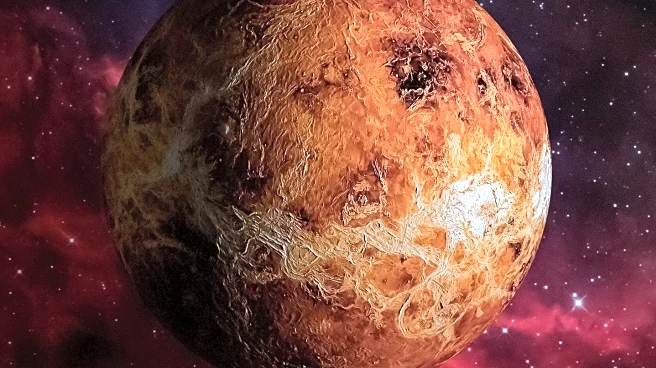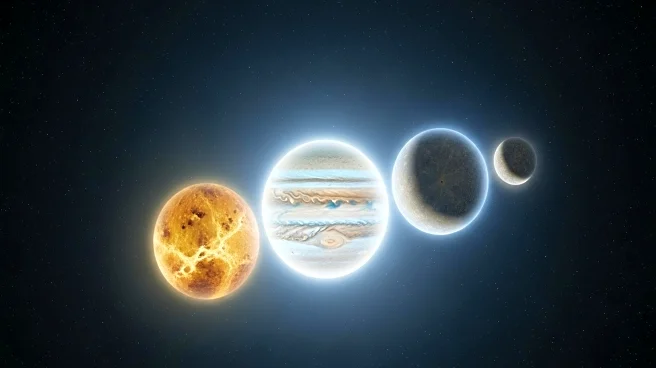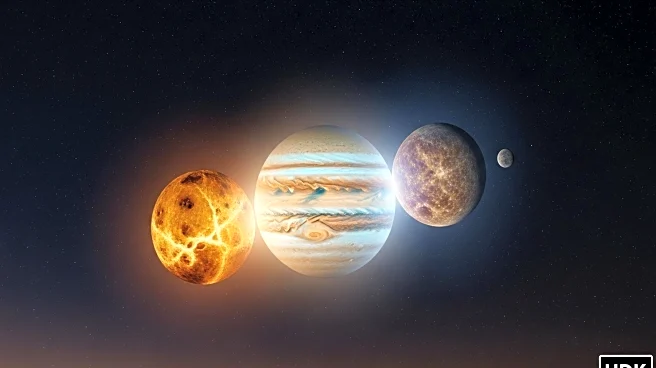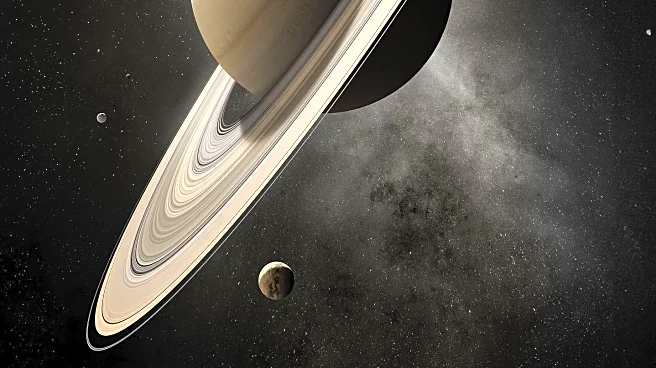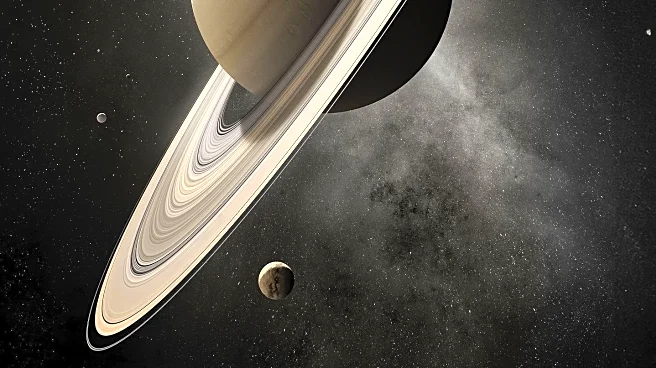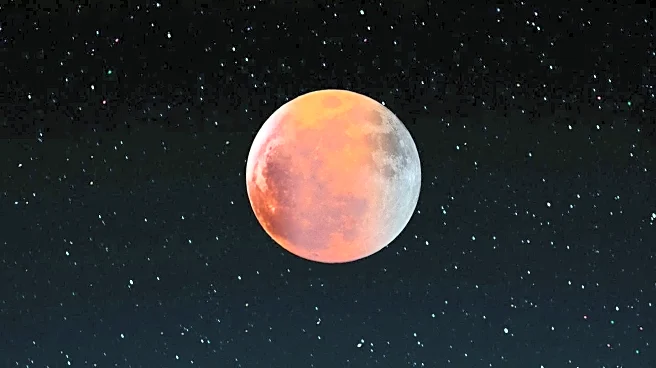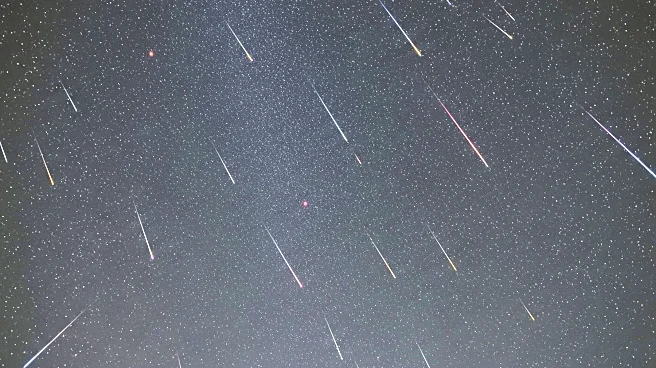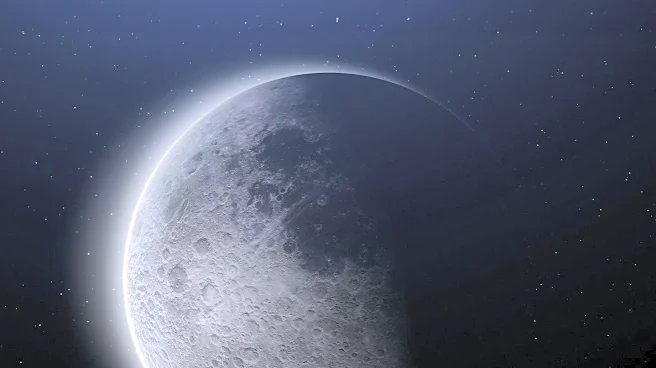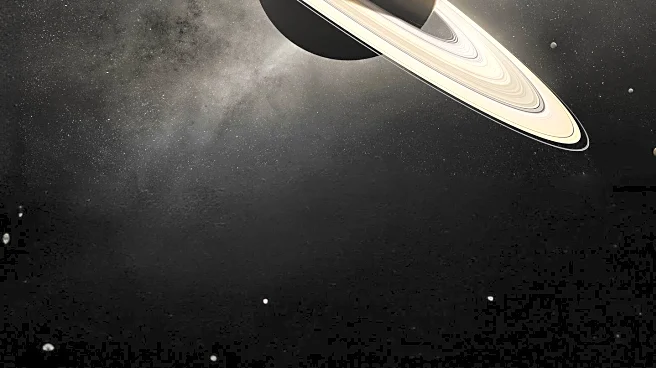What's Happening?
On September 1, early risers will have the opportunity to witness a rare celestial event as Venus, Jupiter, and Mercury align in the predawn sky. This planetary lineup will be visible above the eastern horizon, with Venus shining brightly among the stars of the Cancer constellation. Jupiter will appear as a bright point of light approximately 20 degrees to the upper right of Venus. Mercury will rise about an hour before the sun, forming a diagonal line with Venus and Jupiter along the ecliptic plane. This alignment offers a unique chance for stargazers to observe the planets with the naked eye, although a telescope can enhance the view by revealing Jupiter's Galilean moons and the phases of Venus and Mercury.
Why It's Important?
This celestial event is significant for both amateur and professional astronomers, providing a rare opportunity to observe three planets in close proximity. Such alignments are not only visually stunning but also offer insights into the dynamics of our solar system. For the general public, this event can spark interest in astronomy and science, encouraging educational activities and community engagement. The alignment also serves as a reminder of the vastness and complexity of the universe, potentially inspiring future generations of scientists and explorers.
What's Next?
Following this event, stargazers can look forward to other astronomical phenomena throughout the year. Observatories and astronomy clubs may organize viewing events to capitalize on public interest. Additionally, advancements in telescope technology and astrophotography equipment continue to enhance the experience of observing such celestial events, making them more accessible to a wider audience.
Beyond the Headlines
The alignment of Venus, Jupiter, and Mercury also highlights the importance of preserving dark skies for astronomical observation. Light pollution is a growing concern that can hinder the visibility of such events. Efforts to reduce light pollution can benefit both professional research and public enjoyment of the night sky.
